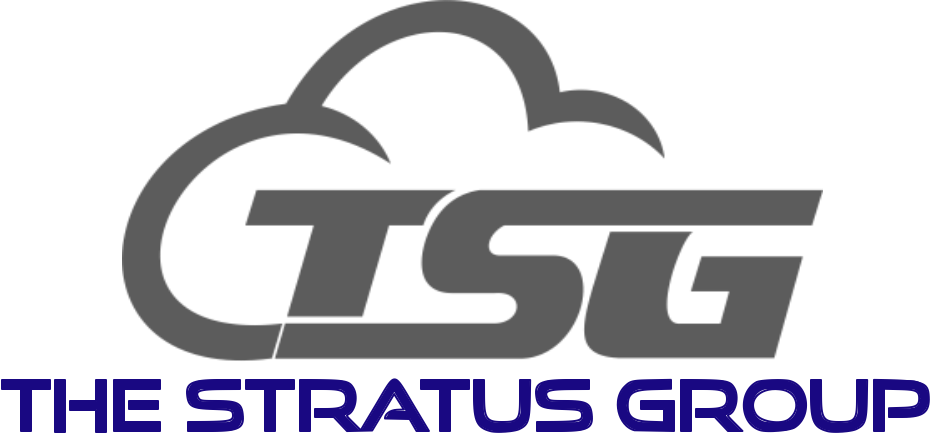Audit Season Without the Stress: Technology Best Practices for Non-Profit CFOs
For non-profit CFOs, audit season often arrives with a familiar wave of anxiety. It’s a period marked by late nights, frantic searches for documentation, and the gnawing uncertainty of whether the numbers will align across a dozen different spreadsheets and systems. The stress culminates in a high-stakes review that can feel more like an interrogation than a validation of a year’s hard work.
But what if audit season wasn’t a source of stress? What if it was simply a calm, predictable confirmation of your organization’s financial health and integrity? The truth is, the annual audit scramble is merely a symptom of a deeper, year-round issue: a disconnected, inefficient, and often outdated technology foundation. Most non-profits don’t struggle with audits because of one catastrophic error; they struggle because of a thousand tiny cuts—missing documentation, poorly labeled expenses, and manual workarounds that create data chaos.
By leveraging modern technology and adopting key best practices, you can transform your audit process from a reactive fire drill into a proactive demonstration of stewardship. This guide outlines how to build a scalable, audit-ready tech foundation that not only eliminates stress but also strengthens your organization, empowers your team, and solidifies trust with your board and funders.
The Root Causes of Audit Season Stress
The story is a common one for non-profit CFOs. The board requests a simple three-year trend report, but the numbers don’t line up. Finance has one version, Programs has another, and Development is working from a spreadsheet with last year’s grant codes. The CFO is left trying to manually reconcile data, second-guessing which numbers are right, and feeling the dread of an impending audit with no single source of truth.
This scenario is the direct result of a technology gap. Key pain points that turn audits into a nightmare include:
- Disjointed Systems: When your finance, CRM, HR, and program management platforms don’t communicate, you’re left with data silos, duplicated data entry, and endless manual reconciliations 3. This makes producing a consistent, reliable report nearly impossible.
- Manual Workflows: Relying on paper invoices, physical checks, and spreadsheet-based expense reports creates an enormous administrative burden and a weak audit trail. Finding a specific invoice or proof of approval can become a time-consuming archaeological dig.
- Lack of a Clear Audit Trail: Without a system that automatically tracks every transaction, approval, and change, proving compliance and demonstrating internal controls is difficult and subjective.
- Underperforming Internal Teams: Many CFOs become the “accidental CTO,” getting blamed for systems they didn’t design and can’t fully control. An internal IT team that is effective at fixing printers but lacks strategic vision on integrations or security leaves the CFO exposed and overwhelmed.
These issues don’t just create audit-season stress; they lead to staff burnout, missed funding opportunities due to poor reporting, and a loss of stakeholder trust. The solution lies in shifting from a seasonal panic to a year-round, technology-driven state of audit readiness.
Core Technology Best Practices for a Stress-Free Audit
A stress-free audit begins with the understanding that the organization, not the auditor, is responsible for maintaining clean records and strong internal controls. Auditors must remain independent; they can't prepare your journal entries or reconcile your accounts. Technology is the key to empowering your team to own this process with confidence and efficiency.
1. Build an Integrated, Cloud-Based Tech Stack
The foundation of an audit-ready organization is a modern tech stack where systems are integrated and data flows seamlessly. This eliminates silos and creates a single source of truth.
- Go Paperless with Cloud Storage: The first step is to move away from paper files. Digitize financial documents and store them in a secure, cloud-based system like SharePoint, Google Drive, or Box. Create a logical folder structure that auditors can easily access, which is especially crucial for virtual audits.
- Adopt Cloud-Based Accounting Software: Platforms like QuickBooks Online or Sage Intacct serve as the central hub of your tech stack. Being cloud-based means your data is securely accessible from anywhere, you reduce physical hardware costs, and you benefit from a system that is constantly updated. According to a 2023 report, 74% of non-profit finance leaders are more likely to accept a position at an organization with modern, cloud-based technology, highlighting its role in attracting and retaining talent.
- Integrate Key Financial Tools: A strong tech stack ensures all your tools work together. A powerful combination for many non-profits includes:
- AP/AR Automation: A system like Bill.com integrates with your accounting software to digitize your entire payables process. It eliminates paper checks, creates a transparent payment record, and attaches invoices directly to transactions.
- Expense Management: Tools like Expensify or Zoho Expense allow staff to digitally track expenses and upload receipts from their phones, creating an immediate and verifiable record.
- Document Management & OCR: Solutions like Dext use Optical Character Recognition (OCR) to automatically pull data from invoices and receipts, feeding it directly into your accounting software and reducing manual data entry errors.
2. Automate Workflows to Strengthen Internal Controls
Automation doesn’t just save time; it builds a resilient and transparent system of internal controls that auditors love to see.
- Automate the Audit Trail: Modern accounting systems create an immutable audit trail for every transaction. They automatically record who created, approved, and modified an entry, along with a timestamp. This makes it easy to demonstrate compliance with internal policies and grantor requirements, such as federal CFR 200 cost principles.
- Establish Role-Based User Permissions: One of the most powerful features of systems like Sage Intacct is the ability to set granular user permissions. You can enforce segregation of duties by restricting access based on roles. Crucially, you can grant auditors "read-only" access, allowing them to pull the information they need directly without disrupting your team's workflow. This simple feature has saved organizations enormous amounts of time; one non-profit, Samaritan House, eliminated eight full days of audit preparation by giving their auditor this level of access.
- Implement Electronic Signatures and Approvals: Maintain clear authorization workflows without printing a single page. E-signature tools and built-in approval flows within your AP and expense systems ensure that every payment has a documented and preserved approval trail.
3. Proactive System Management and Documentation
A stress-free audit is the result of a proactive, year-round strategy. Instead of scrambling, you should be continuously maintaining your systems.
- Conduct Regular Technology Reviews: At least annually, inventory your technology to identify what you’re using, what you’re paying for, and what’s becoming obsolete.This helps you eliminate redundant tools and free up your budget.
- Reconcile All Accounts Monthly: Don’t wait until year-end. Reconcile all bank and credit card accounts every month to catch coding errors or uncleared transactions early.
- Maintain Clean Vendor and Grantor Files: Regularly review your vendor list to remove inactive ones. Keep all grant agreements and documentation in a centralized digital folder that you can easily share with auditors.
The Strategic Path to an Audit-Ready Organization
Moving from chaos to clarity requires a strategic, phased approach. You can’t fix everything overnight, but you can build momentum with a clear plan.
1. Baseline and Understand: Before you invest in new tools, you need a clear, unbiased picture of your current environment. Start by conducting an inventory of all your systems, tools, and manual processes. Interview department heads and frontline staff to understand their true pain points and workarounds. Ask the hard questions: Who really owns our tech stack when something breaks? Where are we most exposed from a compliance perspective?. This assessment will give you a visual map of your current state and a diagnosis of the root causes of your pain.
2. Prioritize and Build a Roadmap: With your assessment complete, you can create a practical, phased action plan 11. Prioritize initiatives based on risk and impact. Quick wins—like cleaning up your chart of accounts or implementing read-only auditor access—can build immediate confidence and relief 5. Larger projects, like migrating to a new accounting system, can be planned as longer-term strategic goals.
3. Lead the Change: Executing the plan requires leadership. If your internal IT team is struggling, this is where bringing in external, embedded leadership can make all the difference. A fractional CTO can bridge the gap between executive vision and technical reality, mentor your staff, and own the outcome until your systems are stable and scalable.
The Payoff: More Than Just a Clean Audit
The ultimate goal of this transformation is not just to survive the audit, but to make it a non-event—a simple validation of a well-run organization. The benefits extend far beyond audit season:
- Significant Cost and Time Savings: Organizations that embrace technology see dramatic improvements. The Koret Foundation, for example, completed its audits 60% faster and cut audit costs by 20% after implementing Sage Intacct.
- Improved Team Efficiency and Morale: When you eliminate manual workarounds and frustrating systems, your staff is freed up to focus on mission-critical work. This boosts morale and helps you attract and retain top talent.
- Enhanced Stakeholder Confidence: A clean audit and transparent financial reporting build immense trust with your board, funders, and community. Technology becomes a lever for demonstrating financial stewardship and making a stronger case for support.
- Strategic Clarity for Leadership: With real-time dashboards and data you can trust, you are no longer leading through a fog. You can make proactive, data-driven decisions. The CFO is finally free from the role of "accidental CTO" and can focus on strategic leadership.
Audit season doesn't have to be a period of stress and anxiety. By investing in an integrated, cloud-based tech stack and adopting best practices in automation and internal controls, you can build an organization that is continuously audit-ready. The journey begins not with a frantic search for documents, but with a strategic commitment to turning your technology from a source of friction into your greatest operational asset.
Want help moving away from the accidental CTO role? Schedule a call with The Stratus Group today.
Our Stratus360 IT Leadership Assessment is a rapid, executive-focused engagement designed for CFOs and CEOs who are tired of carrying the burden of underperforming internal tech teams. We cut through operational chaos to surface hidden risks, clarify accountability, and deliver a clear roadmap to operational clarity, audit readiness, and tech-enabled growth.

